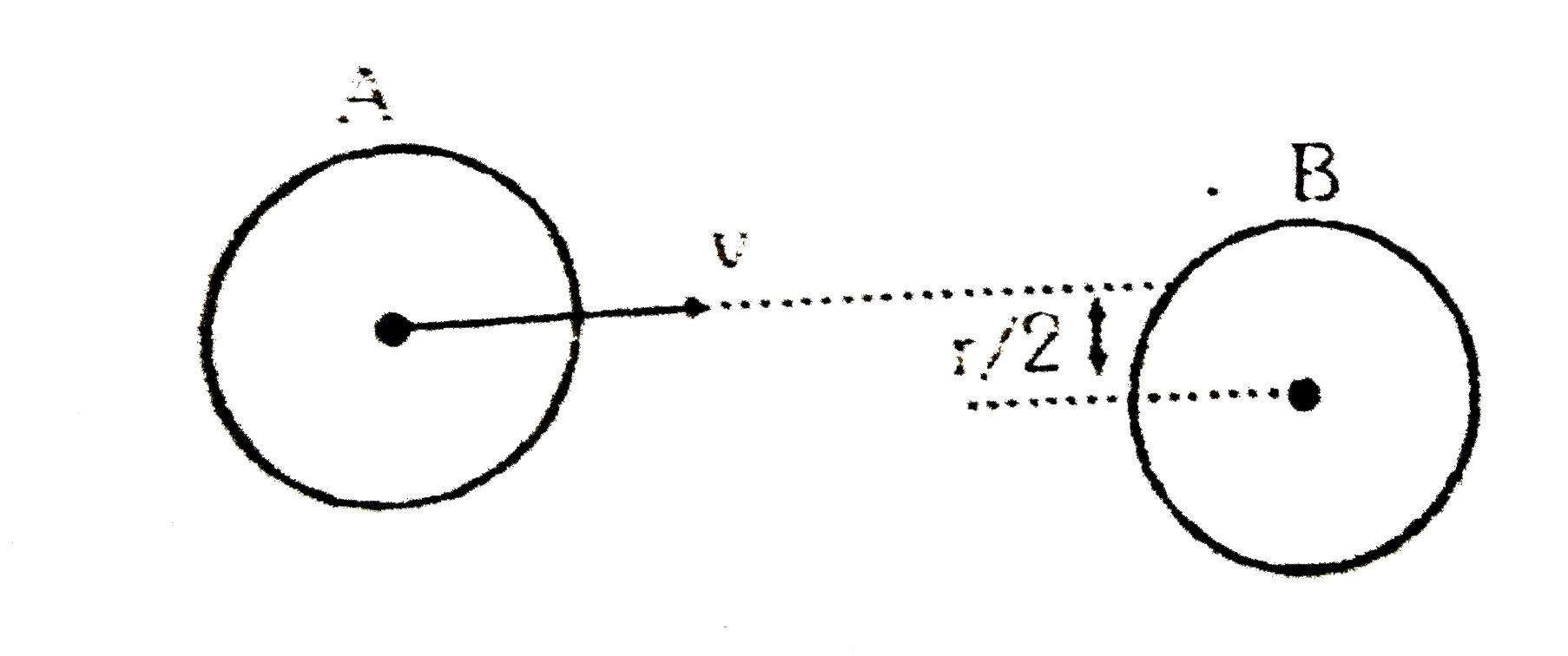In the geiger -marsden scattering experiment, in case of head- on collision the impact parameter should be
maximum
minimum
infinite
zero
The correct Answer is:B
To determine the impact parameter in a head-on collision during the Geiger-Marsden scattering experiment, we can follow these steps:
Step 1: Understand the Concept of Impact Parameter
The impact parameter (B) is defined as the perpendicular distance from the center of the nucleus to the path of the incoming particle (in this case, an alpha particle).
Step 2: Identify the Condition for Head-On Collision
In a head-on collision, the alpha particle travels directly towards the center of the nucleus. This means that the distance from the center of the nucleus to the path of the alpha particle is zero.
Step 3: Analyze the Equation for Impact Parameter
The equation for the impact parameter (B) is given by:
B=Ze2cot(θ/2)4πϵ0e
where:
- Z is the atomic number of the nucleus,
- e is the charge of the alpha particle,
- ϵ0 is the permittivity of free space,
- θ is the scattering angle.
Step 4: Substitute the Scattering Angle for Head-On Collision
For a head-on collision, the scattering angle θ is equal to 180 degrees. Thus, we can substitute θ=180∘ into the equation.
Step 5: Calculate the Impact Parameter
Substituting θ=180∘ into the equation:
B=Ze2cot(180∘/2)4πϵ0e
This simplifies to:
B=Ze2cot(90∘)4πϵ0e
Step 6: Evaluate the Cotangent Function
We know that:
cot(90∘)=0
Therefore:
B=Ze2⋅04πϵ0e=0
Conclusion
The impact parameter B for a head-on collision is zero.
Final Answer
Thus, the impact parameter in the case of a head-on collision is zero.
---
The impact parameter (B) is defined as the perpendicular distance from the center of the nucleus to the path of the incoming particle (in this case, an alpha particle).
In a head-on collision, the alpha particle travels directly towards the center of the nucleus. This means that the distance from the center of the nucleus to the path of the alpha particle is zero.
The equation for the impact parameter (B) is given by:
B=Ze2cot(θ/2)4πϵ0e
where:
- Z is the atomic number of the nucleus,
- e is the charge of the alpha particle,
- ϵ0 is the permittivity of free space,
- θ is the scattering angle.
For a head-on collision, the scattering angle θ is equal to 180 degrees. Thus, we can substitute θ=180∘ into the equation.
Substituting θ=180∘ into the equation:
B=Ze2cot(180∘/2)4πϵ0e
This simplifies to:
B=Ze2cot(90∘)4πϵ0e
We know that:
cot(90∘)=0
Therefore:
B=Ze2⋅04πϵ0e=0
The impact parameter B for a head-on collision is zero.
Thus, the impact parameter in the case of a head-on collision is zero.
Topper's Solved these Questions
- ATOMS BOOK - NCERT FINGERTPS ENGLISHCHAPTER - ATOMS EXERCISE - Higher order thinking skills
8 Videos
- ATOMS BOOK - NCERT FINGERTPS ENGLISHCHAPTER - ATOMS EXERCISE - NCERT Examplar problems
7 Videos
- ALTERNATING CURRENT BOOK - NCERT FINGERTPS ENGLISHCHAPTER - ALTERNATING CURRENT EXERCISE - Assertion And Reason
15 Videos
- COMMUNITCATION SYSTEMSBOOK - NCERT FINGERTPS ENGLISHCHAPTER - COMMUNITCATION SYSTEMSEXERCISE - Assertion And Reason
30 Videos
Similar Questions
Knowledge Check
In geiger-marsden scattering experiment , the trajectory traced by α- particle depends on
Anumber of collisionBnumber of scattered α-particlesCimpact parameterDnone of theseIn the geiger -marsden scattering experiment the number of scattered detected are maximum and minimum at the scattering angles respectively at
A0∘ and 180∘B180∘ and 0∘C90∘ and 180∘D45∘ and 90∘(A) the trajetory traced by an incident particle depends on the impact parameter of collision.
(R) the impact parameter is the perpendicular distance of the initial velocity vector of the incident particle from the centre of the target nucleus.Aif both assertion and reason are true and reason is the correct explanation of assertion.Bif both assertion and reason are true but reason is not the correct explanation of assertion.Cif assertion is true but reason is false.Dif both assertion and reason are false.
In Rutherford scattering experiment, what will be the correct angle for α scattering for an impact parameter b=0 ?
View SolutionIn Rutherford scattering experiment, what will b ethe correct angle for α scattering for an impact parameter b=0 ?
View SolutionA disk A of radious r moving on perfectly smooth surface at a speed v undergoes an elastic collision with an identical stationary disk B. Find the velocity of the disk B after collision if the impact parameter is r/2 as shown in the figure :-

View SolutionIn a Geiger - Marsden experiment, calculate the distance of closest approach to the nucleus of Z=75, when an α - particle of 5 Me V enery impinges on it before it comes momentarily to rest and reverses its direction.
How will the distance of closest approach be affected when the kinetic energy of the α-particle is doubled ?
View SolutionIn a geiger - marsden experiment. Find the distance of closest approach to the nucleus of a 7.7 me v α- particle before it comes momentarily to rest and reverses its direction. (z for gold nucleus = 79) .
View Solution
